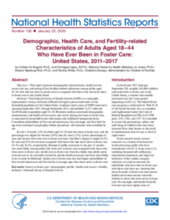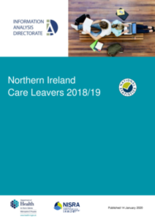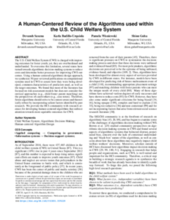Displaying 61 - 70 of 558
In this paper, the authors examine how standardized tools, in this case, a standardized parenting programme and a standardized Norwegian assessment tool, influence professional roles as experienced by child welfare workers (CWS professionals) in Norway.
This paper explores the potential of data linkage to contribute to understanding interactions between care proceedings and care demand, the examination of changes in practice through the analysis of cohorts of children in the care system, or receiving services, and the provision of feedback to those working in the family justice system on the outcomes of care proceedings for children in the UK.
The Outcomes for children before and after care proceedings reform study linked administrative records with a research database of care proceedings to examine children's care and service journeys associated with care proceedings in England and Wales.
The purpose of this manual is to provide guidance on how to collect and report data on children in formal alternative care in a standardised way, and to analyse, present, and make the data available for use.
This study examined the outcomes of a training aimed at enhancing child welfare practitioners’ use of data from the the Ontario Looking After Children (OnLAC) project for service planning related to young people’s educational outcomes.
This report presents demographic characteristics, health service access and use, and timing of key fertility-related milestones among adults aged 18–44 who had ever been in foster care as compared with those who had never been in foster care in the United States.
This annual publication presents information on those who left care during the previous financial year, as well as the circumstances of those who have left care at the time of their nineteenth birthday.
This report draws attention to themes emerging from notifications of the deaths of 61 care experienced children and young people over seven years from 2012 to 2018.
This publication from UNICEF showcases 18 reports from 2020 with a high potential for impact on policies and programmes that benefit children, including a report on deinstitutionalization in Bulgaria, a report on unaccompanied minors in Italy, and more.
Using a human-centered algorithmic design approach, the authors of this study synthesize 50 peer-reviewed publications on computational systems used in the U.S. Child Welfare System (CWS) to assess how they were being developed, common characteristics of predictors used, as well as the target outcomes.









